N Chandra Mohan
Although India is a labour-surplus economy – with an unlimited number of workers willing to work at a subsistence wage – a paradoxical feature of the labour market is the rising incidence of scarcity or shortages amid a situation of potential plenty.
No doubt, this pertains to skilled labour. But when 15 per cent of Indian trucks are idle owing to a shortage of drivers or India Inc is worried that the National Rural Employment Guarantee Scheme (NREGS) is depriving business of labour, shortages are rife across the skills spectrum.
There are disturbing indications that this paradoxical feature will only worsen in the future and is serious enough to threaten the country's rapid growth dynamics.
For starters, the metals and mining sector is booming but industry is worried about the dearth of qualified metallurgists.
...
Why India is grappling with labour issues
The difficulty is that the new generation of engineers grooves more on IT and management than heavy metal! This is indeed a dismal trend since the steel industry develops in tandem with the growth of the economy.
But even in IT, infrastructure and power, employers are concerned about the unmet demand for skills.
A couple of years ago, the Federation of Indian Chambers of Commerce and Industry and the World Bank conducted a survey of 157 employers across sectors and regions, half of which were large employers.
...
Why India is grappling with labour issues
This survey sought answers on: (i) skills employers considered important when hiring new engineering graduates; (ii) how satisfied employers are with the skills of engineering graduates; and (iii) important skills in which engineers were falling short.
The results confirm a widespread dissatisfaction with the current graduate skills in the country. Around 64 per cent of employers were only somewhat satisfied with the quality of the new hires or worse.
They perceive soft skills – core employability and communication skills – to be very important. Gaps were found to be more severe in higher-order thinking skills — see the World Bank working paper "Employability and Skill Set of Newly Graduated Engineers in India" by Andreas Blom and Hiroshi Saeki, April 2011.
The country's planners are aware of this paradox of shortages in a labour-surplus economy.
...
Why India is grappling with labour issues
Photographs: Reuters
According to the draft document on Faster, Sustainable and More Inclusive Growth: an Approach to The 12th Five-Year Plan, "experience has shown that rapid growth in the recent past has been accompanied by shortages of specific skills and increasing rates of employee turnover. The medium and small-scale enterprises sector is particularly hard hit in key areas of skills. Therefore, much more needs to be done in the area of skill development..."
The prospect of skill shortages in construction, for instance, can halt the country's rapid growth in its tracks.
This industry is critical to building physical infrastructure since it accounts for more than half the investment required for setting up facilities like ports, power projects, roads and bridges.
...
Why India is grappling with labour issues
Photographs: Reuters
The sector has been growing at a double-digit clip during the last eight years and accounts for nine per cent of India's GDP. The vast majority of jobs created between 2004-05 and 2009-10 was also in construction.
The bad news, however, is that to sustain the growth of construction a substantial addition to the workforce is necessary.
That doesn't appear feasible since industry is worried about the lack of enough mechanical engineers and skilled blue-collar workers like high-tech welders, bricklayers and so on.
...
Why India is grappling with labour issues
How is the country going to meet the requirement for 3.7 million engineers, 23.4 million skilled workers and 57 million unskilled and semi-skilled workers by 2020 according to the Plan document?
To address these shortages, a supply-side response is to step up enrollment in industrial training institutes (ITIs) and other vocational institutes, including nursing and computer training schools.
To ensure a continuous and growing supply of quality manpower, large investments in public sector institutions of higher learning and more ITIs are necessary.
...
Why India is grappling with labour issues
There is also a need to encourage public-private partnerships in this area. Private companies like Larsen and Toubro are also engaged in schemes to impart more skills.
But this sort of response, however, doesn't quite address the paradoxical feature of relative shortages in a situation of abundance.
Though the number of skilled labour thus may grow, industry is concerned that most of it is flowing into higher-paying professions in IT, management, finance and consulting than metal bashing.
As noted earlier, there are also concerns regarding the quality of such manpower. In this milieu, how does one make manufacturing an attractive career option for India's best and brightest?
...
Why India is grappling with labour issues
The upshot is that unless planners come to grips with this problem, this paradoxical aspect of India's labour market will persist, if not worsen.
As if all of this weren't bad enough, industry is also worried that schemes like NREGS cut into their labour requirement.
Not so long ago, the prosperous farmers in vanguard agrarian states of Punjab, Haryana and western Uttar Pradesh also wanted this scheme to be halted during peak harvesting time.
The prospect of growing shortages in unskilled, semi-skilled and skilled labour categories is clearly not the best news for sustaining India's rapid growth.
From the Ivory Tower makes research from the academic world accessible to our readers.

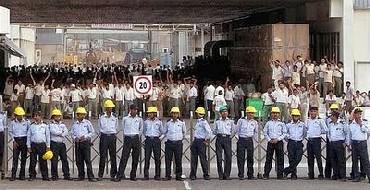
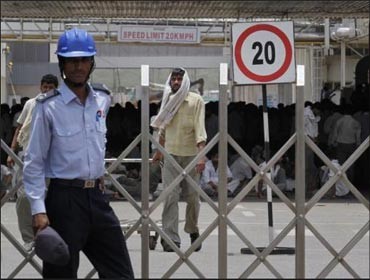

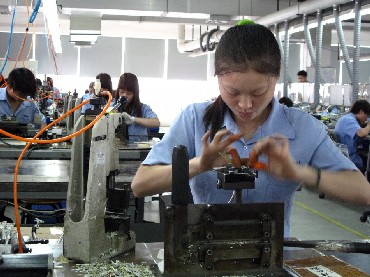
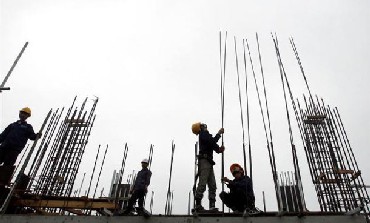
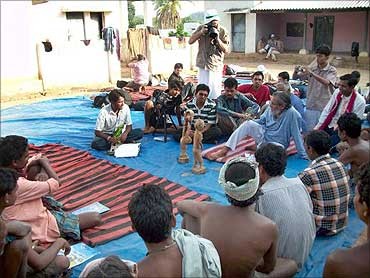
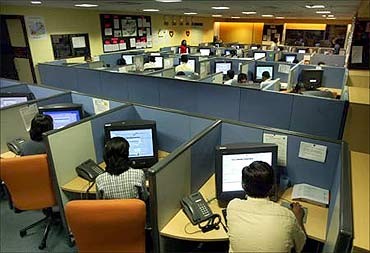


article